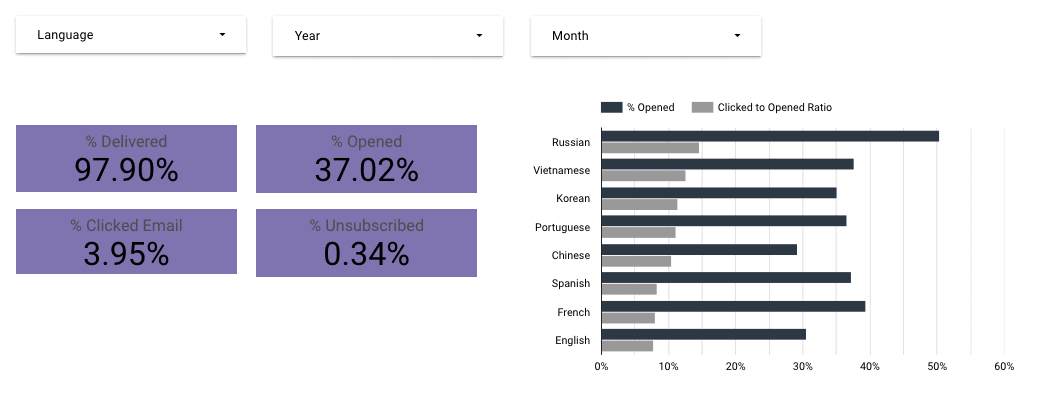Warren Buffett, a celebrated business tycoon, sums up our Marketo Value Realization series best with his quote, “The money is made in investments by investing.” In other words, if you want to reap the rewards of your investment, you need to keep investing in it.
All marketing operations professionals know the investment they’ve made in Marketo is just a starting point. There’s always more to learn, more tech to integrate with Marketo, more ways to grow and realize untapped gains— more investing to uncover value.
In our earlier Marketo Value Realization posts, we highlighted key takeaways essential to your initial investment success:
- Understanding the Marketo Value Realization cycle and flywheel model
- Aligning with business objectives and identifying desired outcomes
- Evaluating your current state, future impact, and documenting your decisions
- Proactively planning for both project and change management
In the final stages, we’ll address the continual investing aspect of Marketo Value Realization:
- Managing change, getting stakeholder support, and enabling teams
- Analyzing, actioning, and visualizing your results
- Sustaining change
Let’s dig in.
Managing Change: Bottom-Up and Top-Down Communication
One of the more challenging aspects of getting value from any investment is managing the change associated with it. Complex change requires a structured process and precision in execution, and many organizations underestimate or under prepare for what’s needed to be successful.
Solicit support from the top down. While change happens from the bottom up, it must have support from the top-down, especially if you are impacting how the company delivers revenue or altering the metrics to assess performance. As such, gaining support from relevant leaders and closely tied stakeholders is essential.
Those you want onboard:
- Marketing
- Marketing operations
- Sales
- Sales Operations
- Finance
- CEO
Plan incremental change from the bottom up. The best change management plans prepare staff (and stakeholders) for gradual change, communicating the need for a new direction, agreeing on the milestones and metrics for success, celebrating the victories throughout each stage, and reporting on the results post-launch.
Empowering and Enabling Teams
“Risk comes from not knowing what you are doing.” – Warren Buffett
Change management is both a process and a competency— a leadership skill that enables change. Core to that ability is understanding the natural human uncertainties and fears of adopting new methods. Involving employees early on is the best way to get them on board and mitigate personal anxieties.
Two proven tactics MERGE has used to promote engagement and destabilize concerns:
Establish an advisory board. There’s no better way to get employees on board with a new project than to invite their participation in guiding the direction. Start an advisory board comprised of individual contributors whom their peers respect to provide peer leadership and user feedback. An advisory board gives employees a voice, builds project ownership, assists with team training, and encourages user adoption. Enlisting project advocates early on also has a ripple effect, positively influencing others around them.
Have a plan for team training. Preparing for successful user adoption on a broader scale requires a plan for team training. Think about the different user groups, the best formats (live, on-demand videos, playbooks, etc.), the optimal training group size, how long the training should be, and who their point of contact is for post-training questions. To quote Justin Norris, Sr. Director of Solution Architecture, “Building great systems and processes is not enough. To deliver business value, we must ensure teams understand, adopt, and are enabled to use what we’ve built.” Too often, training is an afterthought. Bake team training into your project plan from the get-go if you’re serious about getting the most out of your investment.
Communicating Your Results
“Without good communication skills, you won’t be able to convince people to follow you, even though you see over the mountain and they don’t.” – Warren Buffett
It goes without saying, but we’ll say it anyway: if you want to demonstrate the value of Marketo and your new solution, you need to communicate your outcomes early, often, down, and up! In fact, 90% of a project manager’s job is spent on communication between the pre-launch communication plan and sharing the results. What specific communications should be in your plan?
Schedule post-launch presentations. Once your solution is launched, schedule a project overview highlighting your initial objectives, a summary of what transpired, the outcomes you’re experiencing, and what’s next. Gather feedback from employees of what went well, what didn’t go well, additional training needed, and how to improve from here. Plan on a post-launch presentation for all relevant teams and a separate presentation for management to reinforce how marketing supports corporate objectives.
Implement feedback. Often overlooked, but don’t forget to report on the feedback obtained from your post-launch review and how it’s being implemented, as it reinforces that you heard the comments and are acting upon them.
Develop ongoing reporting. Regular (weekly/monthly/quarterly) reporting reinforces the impact of the new solution and shows appreciation for your staff’s hard work. Management, too, needs to understand the results, and providing a synopsis of post-launch data to baseline metrics illustrates the outcomes effectively. As an example, this is sample data from a quarterly summary:
Create data visualizations. Visual representations of data are sometimes better received than spreadsheets of numbers. Data visualization provides visual context through graphs, making it easier to identify trends and patterns in large data sets. Tools like Google Data Studio populate from Google Analytics and data downloaded from Marketo to provide beautiful visuals that can be customized and filtered. A few examples:
Sustaining Change
“We want our managers to feel a sense of ownership.” – Warren Buffett on the topic of managing change.
Of course, no organization implements change for the sake of change. Likely, you desire a better outcome, improved efficiency, more automation— whatever your objective is. But the project is a loss if you’re not continually checking in with employees, listening to their feedback, responding to it, measuring user acceptance, and making adjustments along the way. No design solution is ever “done and done” or “set it and forget it.” And any solution provider or Marketo agency that concludes the contract after the solution is implemented is doing you a disservice, too.
Establish governance. After all the work to implement your new solution design, protect your investment by establishing governance. Projects post-launch failures are often the result of unclear or undefined responsibilities, creating gaps and even a lack of ownership. Responsibilities may have shifted while the design solution was in build mode; to support and sustain change over time, implement a post-launch RACI chart:
- Responsible: who actually does the work.
- Accountable: who is ultimately accountable and can make/veto decisions
- Consulted: who needs to provide feedback and contributes to the ongoing activity
- Informed: who should be kept aware of the decisions or actions
Specific activities to address in your RACI:
- Administration
- Documentation
- Project Management
- Training
- Reporting
- Cross-Functional Alignment
Develop a strategic roadmap. Successful leaders set organizational direction and purpose, and communicate both. Vision builds employee loyalty and enthusiasm as they know they are part of something greater. Don’t let your marketing operations momentum end with a single project. Have a roadmap of what’s next and the vision for the department in specific time increments: 3 months, 6 months, 12 months, 3 years— you get the idea. Growth comes from continual improvement and staff members who are challenged to stretch themselves and advance their skills.
Attaining Marketo Value Realization
We started this content series by defining Marketo Value Realization as a cycle— a comprehensive approach to what you want to achieve, how you will get there, implementing your plan, measuring your results, and optimizing your outcomes until value is attained.
As we close out the series with this final post, I again want to reiterate the Warren Buffett quote I used in my opening, “The money is made in investments by investing.” To get the most out of Marketo, it’s a continual investment in your staff, your internal communications, and your ongoing MOPS improvements. Our advice: don’t stop investing; the value is there waiting for you to uncover it.
Does your organization need help achieving ROI from Marketo? Learn how the Marketo experts at MERGE can help. Contact us today!



